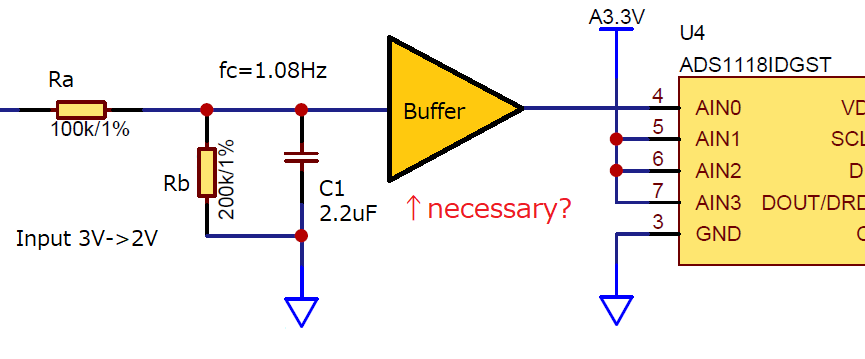Other Parts Discussed in Thread: ADS1018
Hi,
I want to realize the following function.
--------------------------------------------------
Input Stage
RESISTIVE DIVIDING 3V->2V
LPF fc=1Hz
--------------------------------------------------
But,
> 10.2.2 Detailed Design Procedure
> TI recommends limiting the filter resistor values to below 1k.
So do I need to insert a buffer?
The PGA is not a buffer, to drive a switched-capacitor?
Best Regards,
Tomoya


